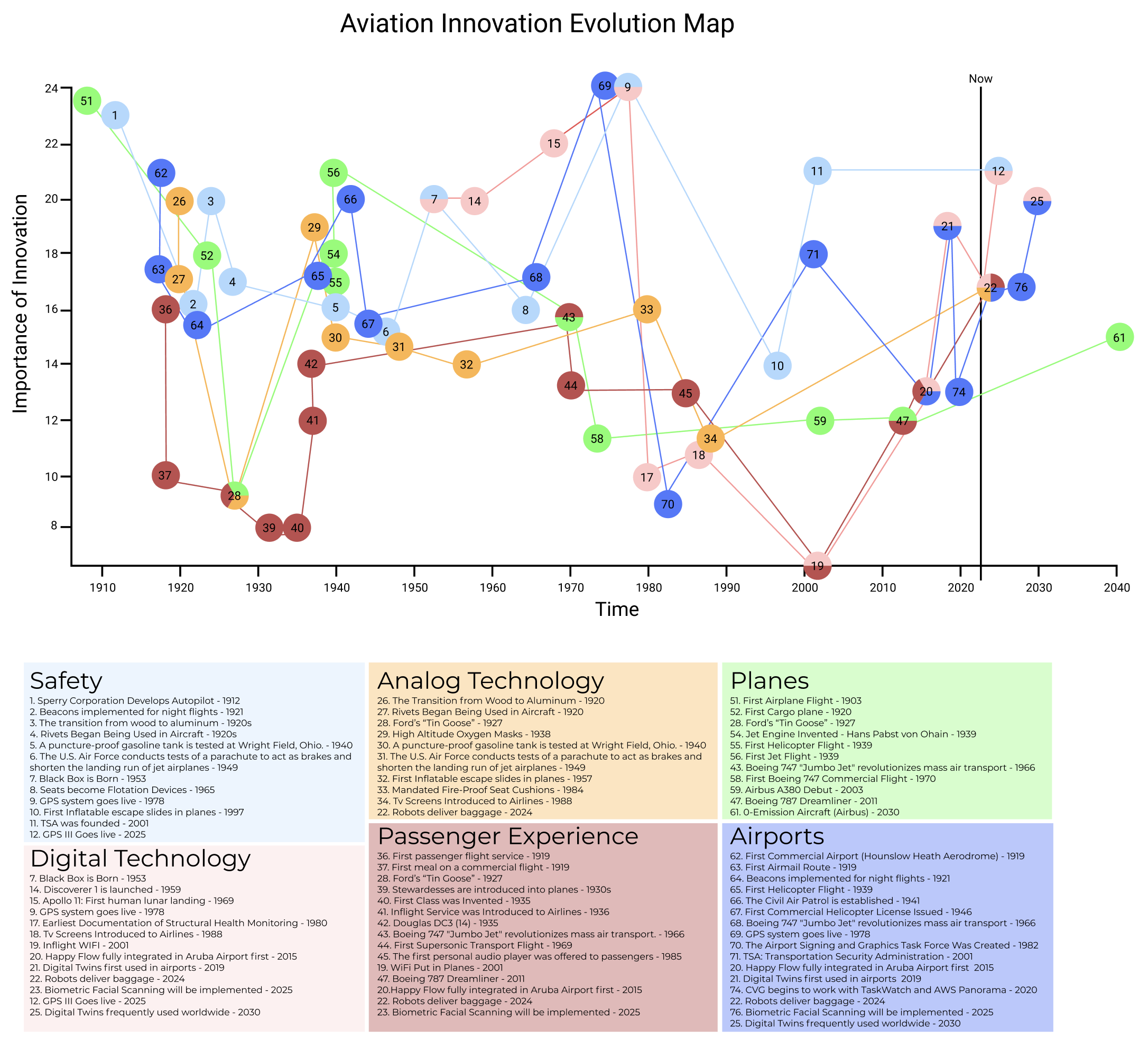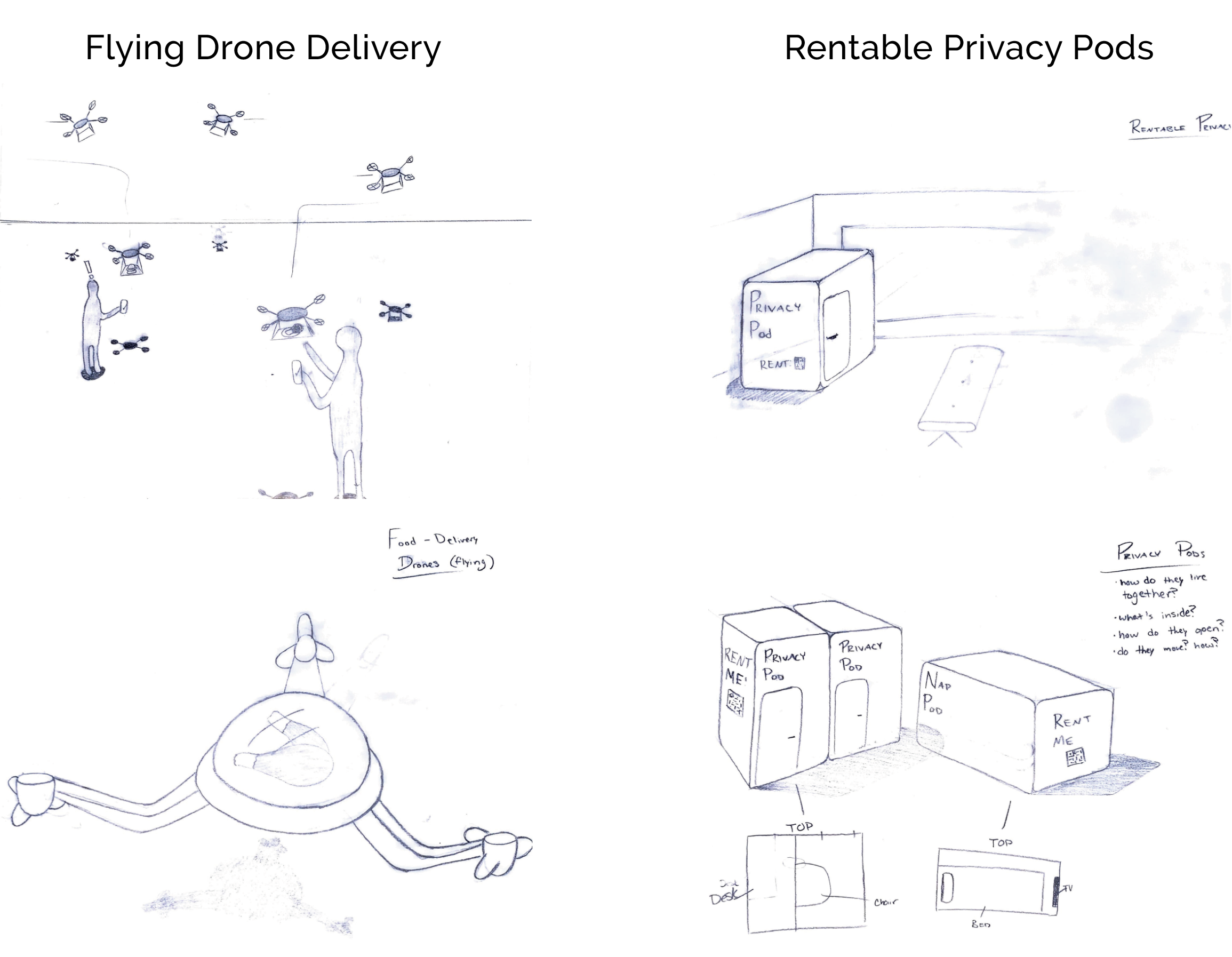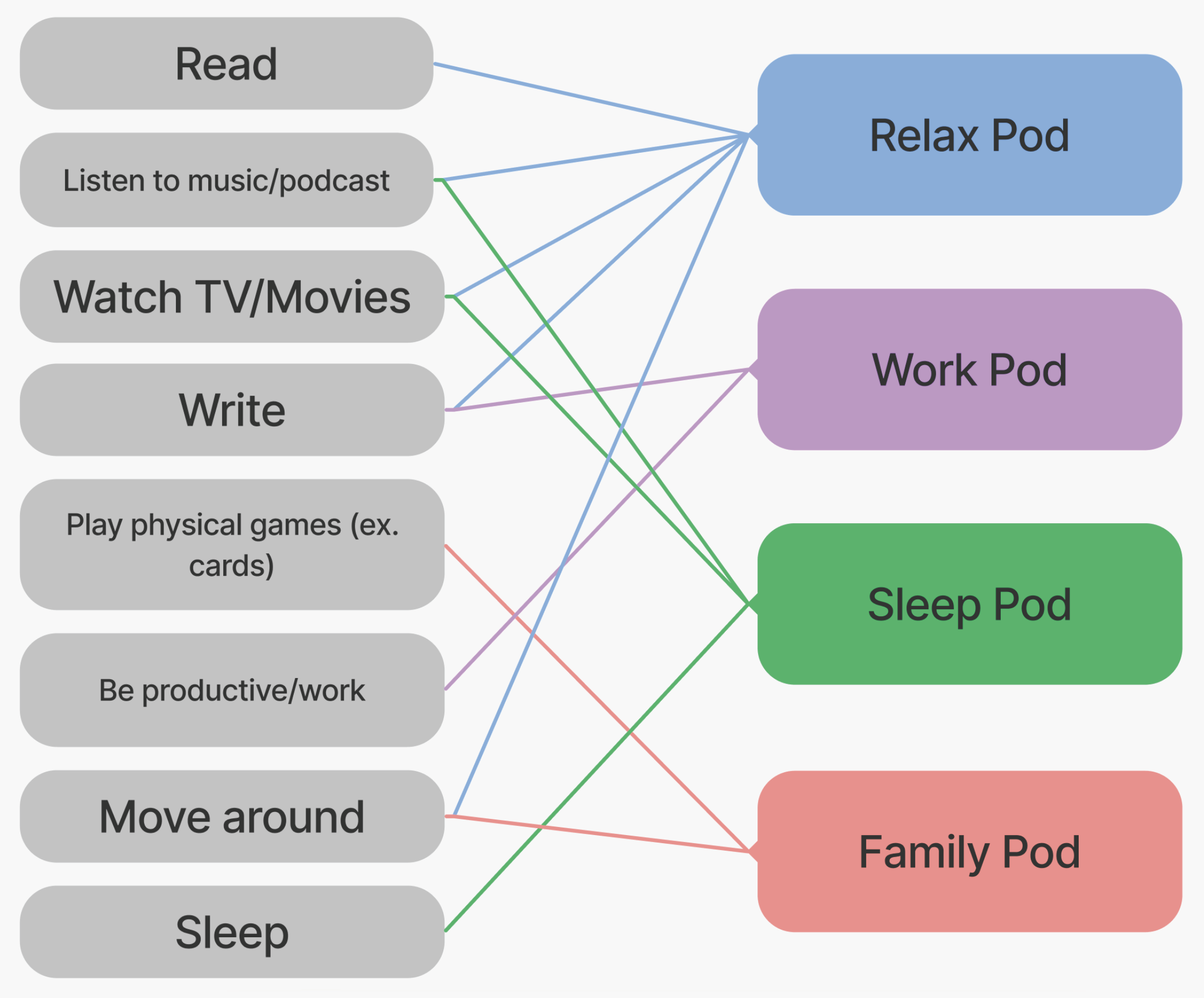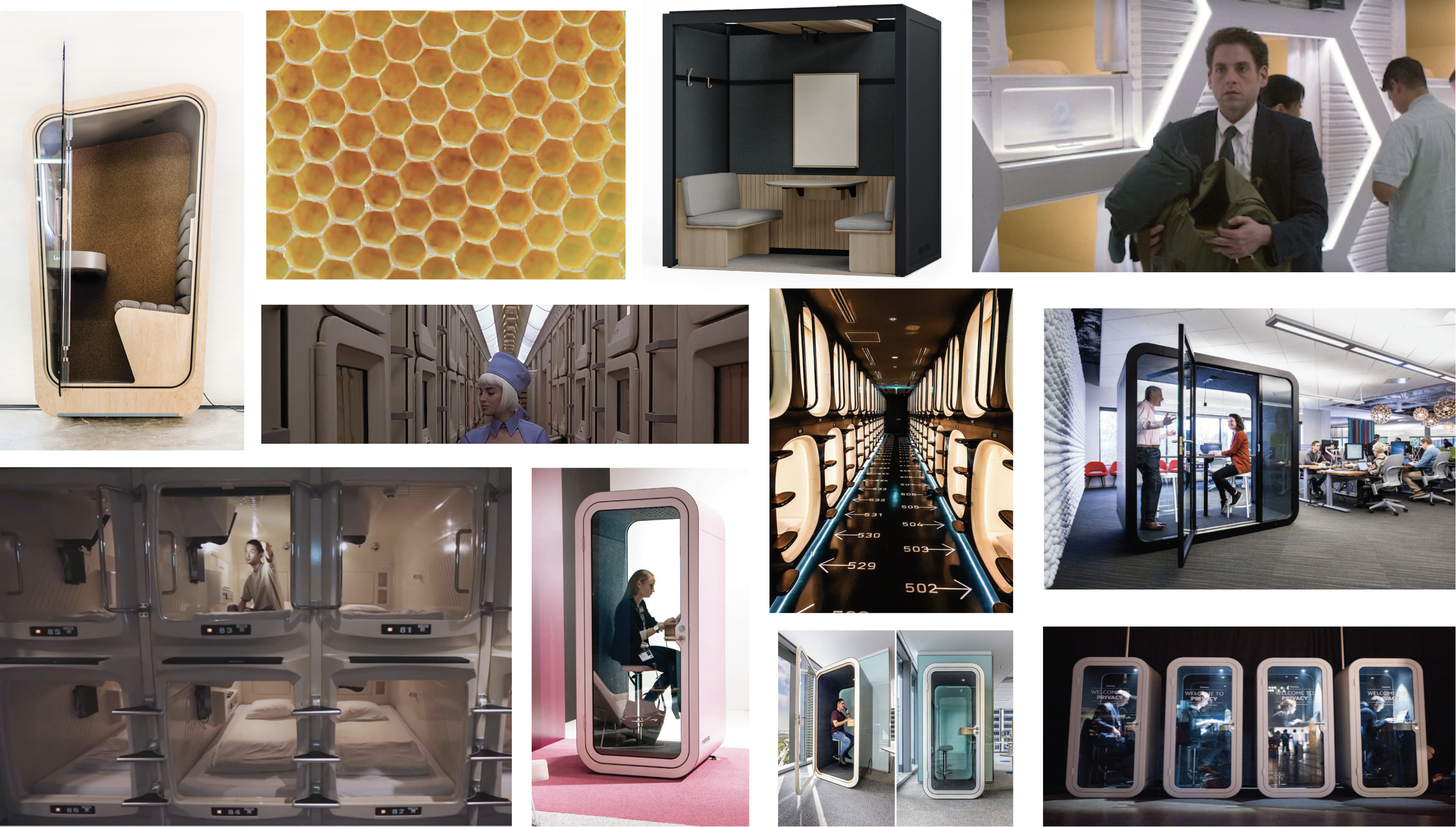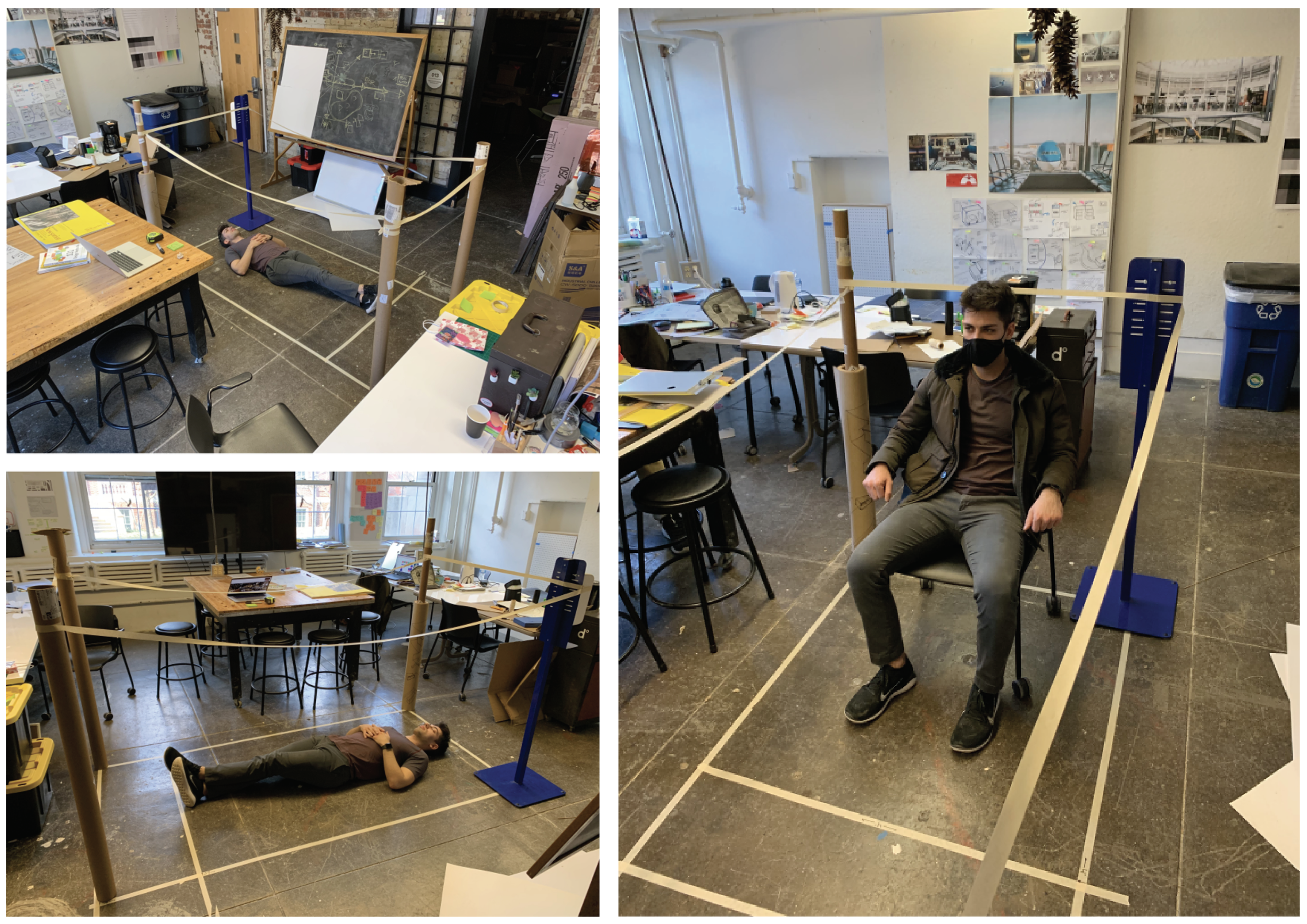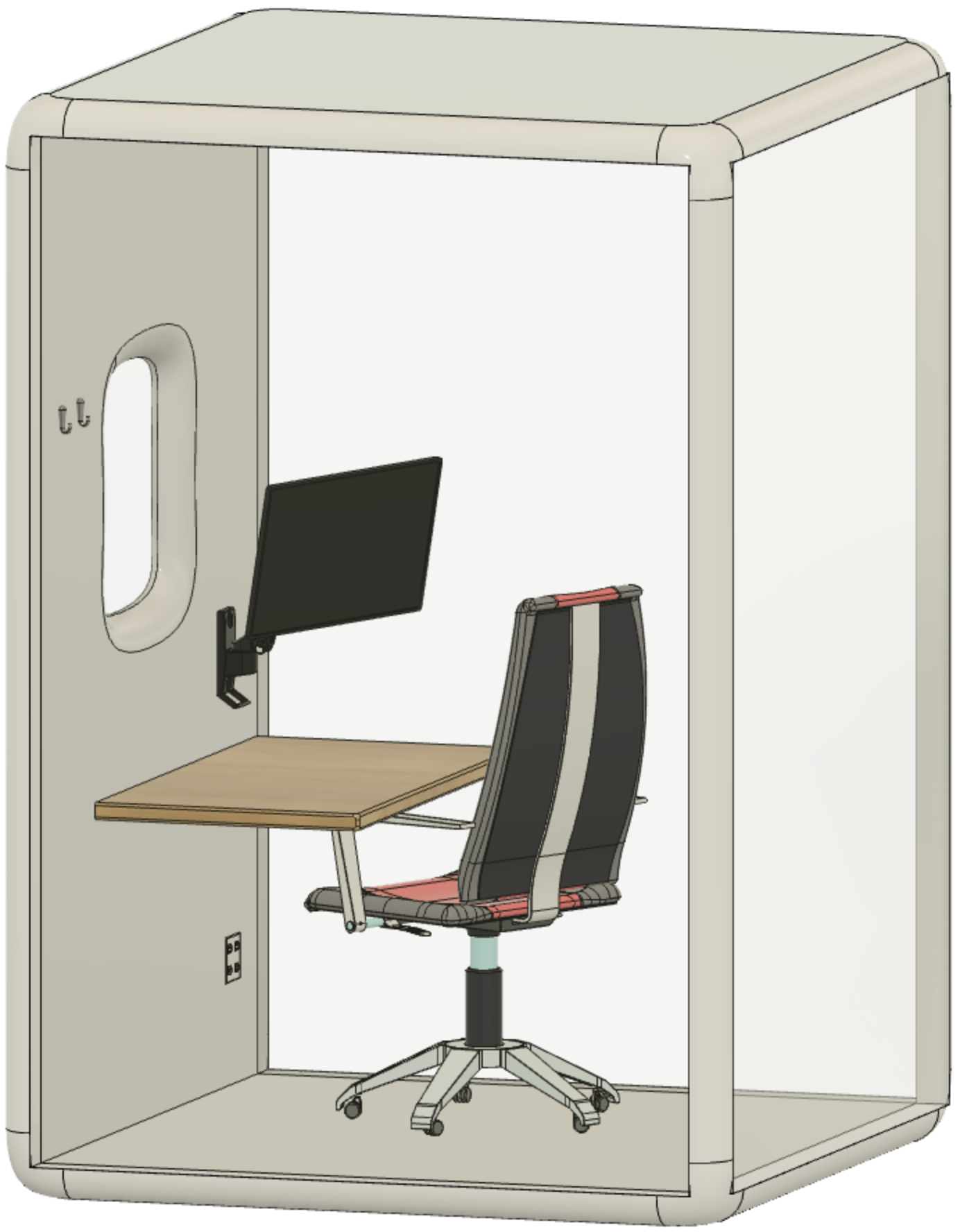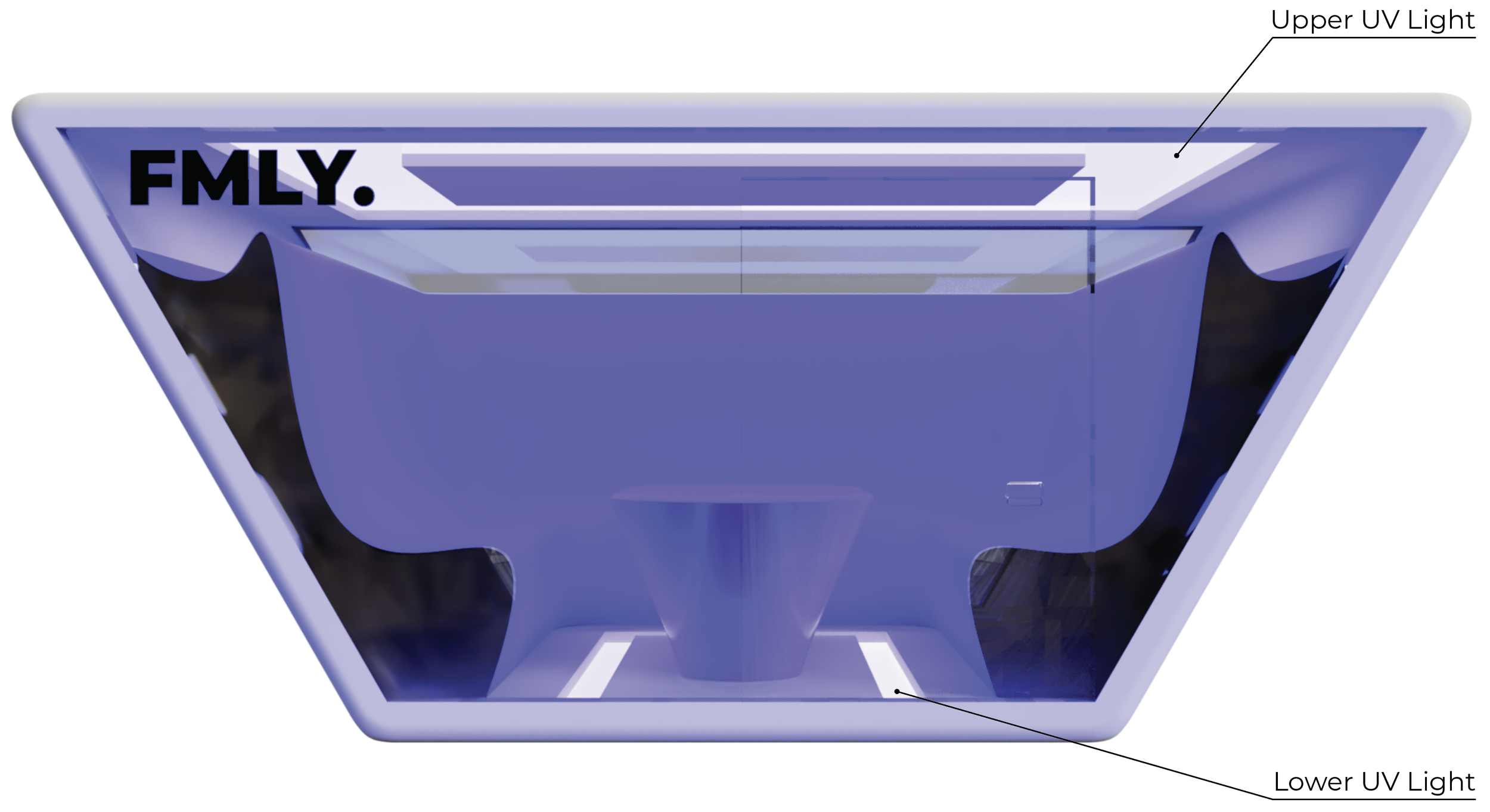Pod Air Travel System
Through a sponsored project with the Cincinnati/Northern Kentucky International Airport (CVG), I had the opportunity to design what the future of air travel would look and feel like. This project displays what the air travel experience could entail in the near future, as well as all the way in the year 2040.
Research
The first step in this project was understanding the world I would be working in. To do so, extensive research into the past, present, and near-future of air travel was done. Focusing on key innovations made over the years that have shaped the air travel experience we know today allowed for a better understanding for what the industry could look and work like in the future.
Pain Point Identification
On the tail end of the initial research phase of the project, I was able to take a trip to tour CVG. Through the research conducted itself along with my experiences on the tour of CVG, I was able to pinpoint a potential area for improvement: the gate area.
The gate area at CVG and other airports all typically serve their main purpose properly, but fall short of being an enjoyable experience for passengers or a financial benefit to the airport. Due to many passengers (known as “gate huggers”) electing to immediately go to their gate and not leave it upon arrival at the airport, they are forced to 1.) spend their time doing nothing but sitting and waiting (an unenjoyable experience) and, 2.) not spend any time or money at/around the airport’s many stores and restaurants (meaning the airport misses out on potential revenue).
Ideation
The next step was ideation. This phase was centered around coming up with different ways to either improve the passengers’ experience at their gates, extend the airport’s attractions to those at their gates, or both.
The final two ideas in this phase were a flying drone delivery service and rentable privacy pods.
After weighing the two options, along with the many others from the ideation phase, it became clear that the idea of designing rentable privacy pods for CVG’s gates was ideal as they had the best opportunity to benefit both the passengers and the airport in relation to the gate areas.
User Research/Inspiration
In order to begin designing the pods themselves, a look into those that would be using them was done in order to better understand the best way to serve the passenger experience. Identifying first what passengers often do during their time waiting at the gates of airports gave me a better sense of the current experience so I could then design to enhance it.
After identifying the eight-ish things many airport passengers often do in their time waiting, I grouped those actions into four different categories, which then became the different types of pods that could be rented. This meant the passenger would have a handful of different pod designs to choose from that could each help to provide the best resources and setting for each passenger to enjoy their air travel experience however they choose.
Additionally, a look into how privacy pods are currently used throughout the world (namely in micro-hotels and office workspaces) and even films helped to get a sense of the outer physical form the pods could take.
Sketching/Prototyping
Once I had an idea of what the pods could look like as well as what each different type of pod’s interior might entail, I began sketching them out to get a better sense of their overall size, shape, and interior makeup.
I also experimented with many different dimensions and proportions and tested them in the physical world with humans inside to ensure that the pods would provide enough room inside while not being overly large on the outside.
CAD Modeling
This was the first real look into what one of the privacy pods could look like. The work pod, featuring your typical work necessities: a desk, desk chair, monitor, and electric and internet access, all encased in a simple, clean, soundproof one-way glass pod.
The current plan was to create five different pod designs, each to be available to be rented by CVG passengers and used while waiting at their gates. This would allow for the enhancement of the passengers’ experience no matter how they wanted to spend their preflight time, as well as bring in additional revenue to the airport.
What if…?
What if we pushed the envelope? What if we looked into the future of CVG and adjacent air travel? Instead of designing ways to improve CVG now, what if we looked 20 years into the future and design for that world of air travel?
Let’s do it.
More Ideation
The current system provided a more comfortable, beneficial, and enjoyable experience to the passengers in current year. If I pushed the concept into the future by twenty years, how could it then provide the same benefit to the experience of air travelers in the year 2040 and beyond?
At this stage, the pods were designed to enhance the gate area of CVG, which is currently consisted of sitting and waiting for hours on end in generic chairs, no personal space, and a multitude of distractions. Sound similar to any other portions of the air travel experience? That’s because it is.
The same story continues once passengers board the plane.
If the pods can provide a more enjoyable experience for passengers at their gates, then they can provide a more enjoyable experience to passengers while they’re in the air, too.
A New System
This move into the future meant an entirely new system for these pods to live within. This also meant a new air travel system for passengers to live within.
However, both of these systems would provide a better overall experience for both airport passengers and airports themselves.
A system designed to provide maximized comfort, privacy, and productiveness for its passengers, and a streamlined, efficient, automated workflow for airports.
Ideation/CAD Modeling
At this point, the pods began to shift forms from a strictly rectilinear outer shell to a system featuring multiple different shapes and sizes.
The new set of pods included an assortment of hexagonal and trapezoidal pods, each coming in “personal” (for one person) and “family”-sized (for a group of people").
Final Changes
The final changes that went into the design of the pods themselves were aimed at adapting the current interiors of the pods to better function in the system they were to live within. This meant making all furniture stationary (since the pods were now going to be in the air) and minimizing the potential for nooks and crannies that might allow passengers to leave items behind after flights.
Additionally, due to the pods now being used continually between various passengers and airports, it was crucial to ensure a safe and functional cleaning system for the pods. Each pod has its own lighting system inside, which also serve as UV lights that are automatically toggled in between flights when one passenger/group has exited the pod, and the next passenger/group is about to enter.
The inside of each pod is designed to so that all surfaces are accessible by the UV light(s) in order to ensure that no bacteria can survive within a pod between uses.

